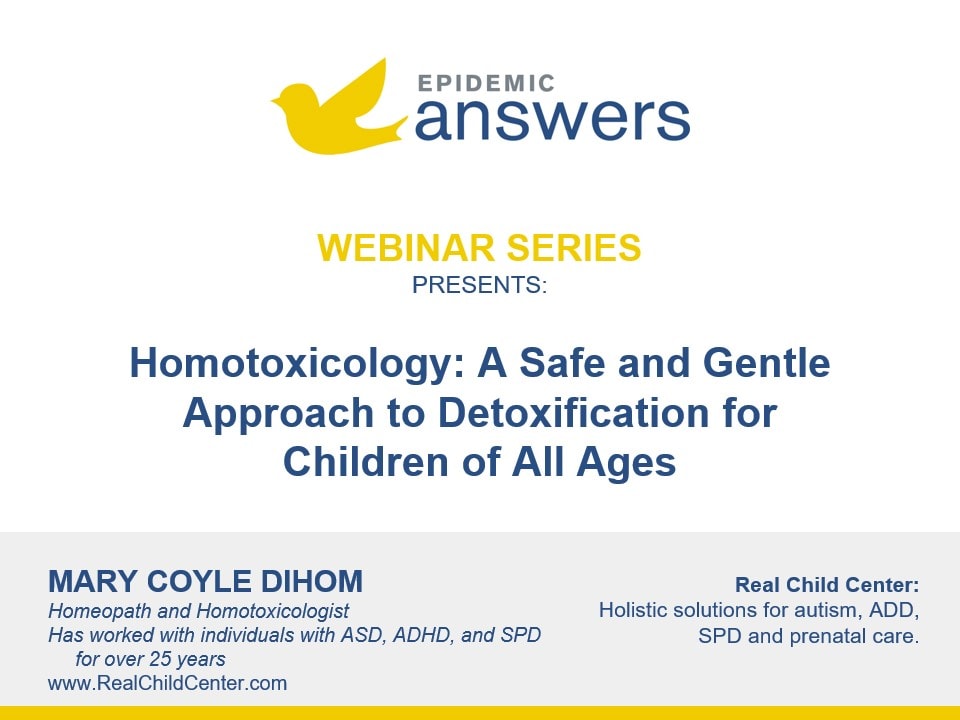Kelly Dorfman, MS, LN writes about the impact of heavy metal toxicity on children with neurodevelopmental disorders. Experts have long recognized heavy metal toxicity as a cause of or contributor to developmental delays, autism, ADHD and Sensory Processing Disorder.
How Do We Protect Against Heavy Metal Toxicity?
Resist absorption of heavy metals with a diet rich in antioxidants. Both a comprehensive nutritional supplement regimen and a healthy diet are essential. In a perfect world, one avoids absorbing lead and mercury altogether by taking in adequate amounts of antioxidants (such as vitamin C and selenium). Children on diets low in antioxidants (usually from a lack of fruits and vegetables) are much more likely to absorb poisons of all sorts. If several children are exposed to the same amount of heavy metal, the ones in the best nutritional shape will take in less and more efficiently excrete what is absorbed. This is why heavy metals do not affect all children in the same way.What, Exactly, Is Chelation?
Parents of children who are suffering from mercury toxicity are exploring chelation as a way to reduce heavy metal burden on the body. Derived from the Greek word for “claw”, chelation is the process of chemically binding metal ions. Every mineral taken into the body (by food or supplement) must be bound to another substance before it can be properly utilized. Raw minerals are unstable. This instability is noted by the little 2+ often written after a mineral. (Calcium is noted as “Ca2+” or lead as “Pb2+”). Calcium, lead, magnesium, mercury and some others have 2 unpaired electrons, indicated by the 2+. These 2 “unmarried” electrons are so desperate to find mates that almost any molecule short two electrons will do. Chelating agents are such molecules. The heaviest (and generally most toxic metals such as mercury, lead, nickel and cadmium) are the most “eligible”. They bond to chelating agents first.What Are the Chelators?
Many different molecules act as chelators. Natural agents include the proteins glycine, methionine, cysteine, histidine, glutathione and taurine. Other antioxidants like vitamins A and C, selenium, and alpha-lipoic acid also have the chemical make-up to work as chelators. Substances found in cilantro, chlorella (algae), garlic, and sodium alginate also assist in the mobilization of metals. Finally the prescription drugs, DMSA, DMPS and EDTA are, arguably, the strongest chelating agents.What Are the Chelation Options?
There are two schools of thought regarding chelation.The “Fast” School
The first or “fast” school, argues that metals, particularly mercury, should be removed as quickly as possible using the strongest chelators. DMSA is the agent most recommended because it so strongly binds to mercury. Time is of the essence, they contend, given the vulnerability of young children to potentially permanent developmental issues. Proponents of fast chelation believe that less-aggressive methods allow mercury to float around and possibly settle in other tissues before being excreted.The “Slow” School
Other practitioners suggest that slower, gentler chelation programs, utilizing food-based agents like cilantro, are safer. DMSA is hard on the kidneys, they note, and risky for young children. Some dentists, involved in mercury removal for decades, cite cases of people becoming violently sick when it is removed too quickly. Those in favor of fast chelation accept severe reactions as part of the healing process. Slow chelation programs protect children from violent withdrawal reactions by taking more time.How Do You Protect the Body During Chelation?
Continue a diet rich in antioxidants. Many symptoms caused by toxic metals come from the proliferation of oxidative-free radicals. Children who have been injured are at increased risk for trouble when the toxic metal is coming out if they are not taking sufficient therapeutic doses of anti-oxidants. All safe heavy metal removal programs have free radical protection (anti-oxidants such as vitamins C and E, selenium and reduced L-glutathione) and a rebuilding component.Which Method Should I Choose?
When choosing for an individual child, keep in mind that fast chelation requires a doctor’s prescription and close medical monitoring.As few doctors are experienced in this treatment, the cost is high and will likely involve travel. Also consider the toxicity level and progress of the child. A less intensive intervention may be preferable for a child who is progressing well. There are no right or wrong answers, only complicated choices for a serious problem we are just beginning to understand.About Kelly Dorfman MS LND
Kelly Dorfman is one of the world’s foremost experts on using nutrition therapeutically to improve brain function, energy and mood. Kelly’s special talent for integrating information from many sources and finding practical solutions has made her a popular speaker and workshop leader. She lectures extensively and is a member of Platform (formerly the National Speakers Association) and has been featured on numerous television programs including CNN’s American Morning.
Kelly’s award winning book, Cure Your Child With Food: The Hidden Connection Between Nutrition and Childhood Ailments (formerly known as What’s Eating Your Child) was given rave reviews by Publishers Weekly and the Washington Post.

As a go-to expert on nutrition issues, Kelly is frequently interviewed and quoted in the media. She has been featured in articles in The Wall Street Journal, Parade, Bethesda magazine, Living Without magazine, and the Huffington Post.
Kelly holds a master’s degree in nutrition/biology and is a licensed nutrition dietitian. She is a co-founder of Developmental Delay Resources, which has merged with Epidemic Answers. You can find out more about Kelly and her practice at kellydorfman.com
Still Looking for Answers?
Visit the Epidemic Answers Practitioner Directory to find a practitioner near you.
Join us inside our online membership community for parents, Healing Together, where you’ll find even more healing resources, expert guidance, and a community to support you every step of your child’s healing journey.




